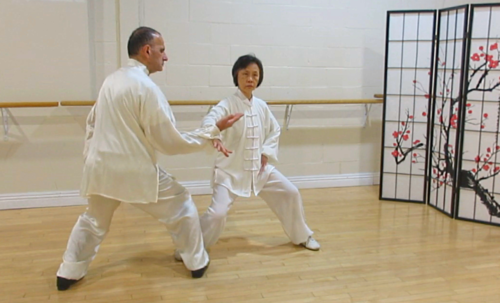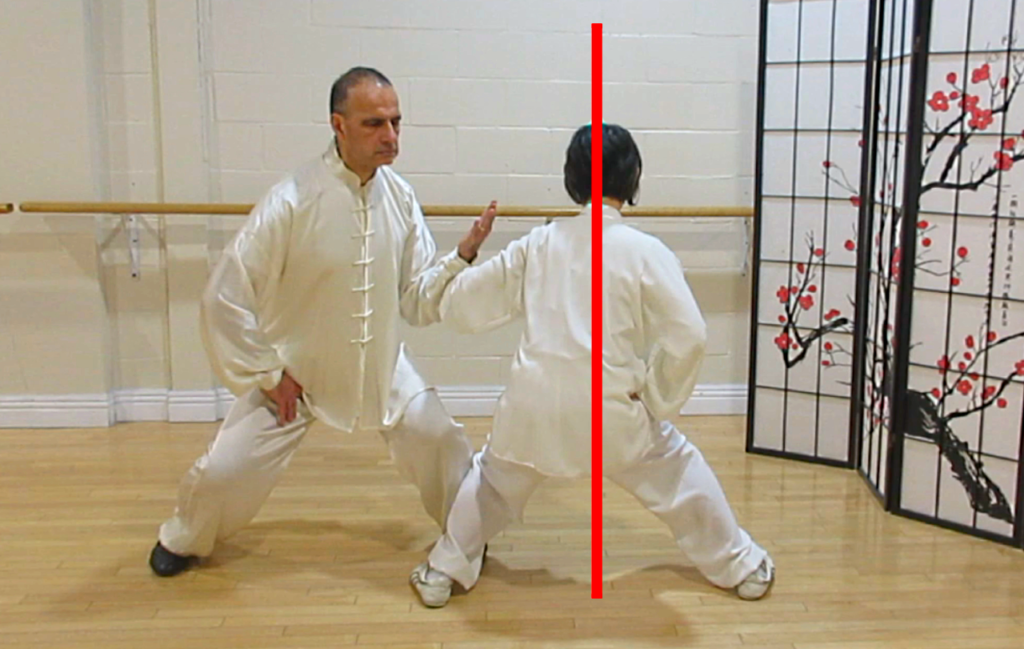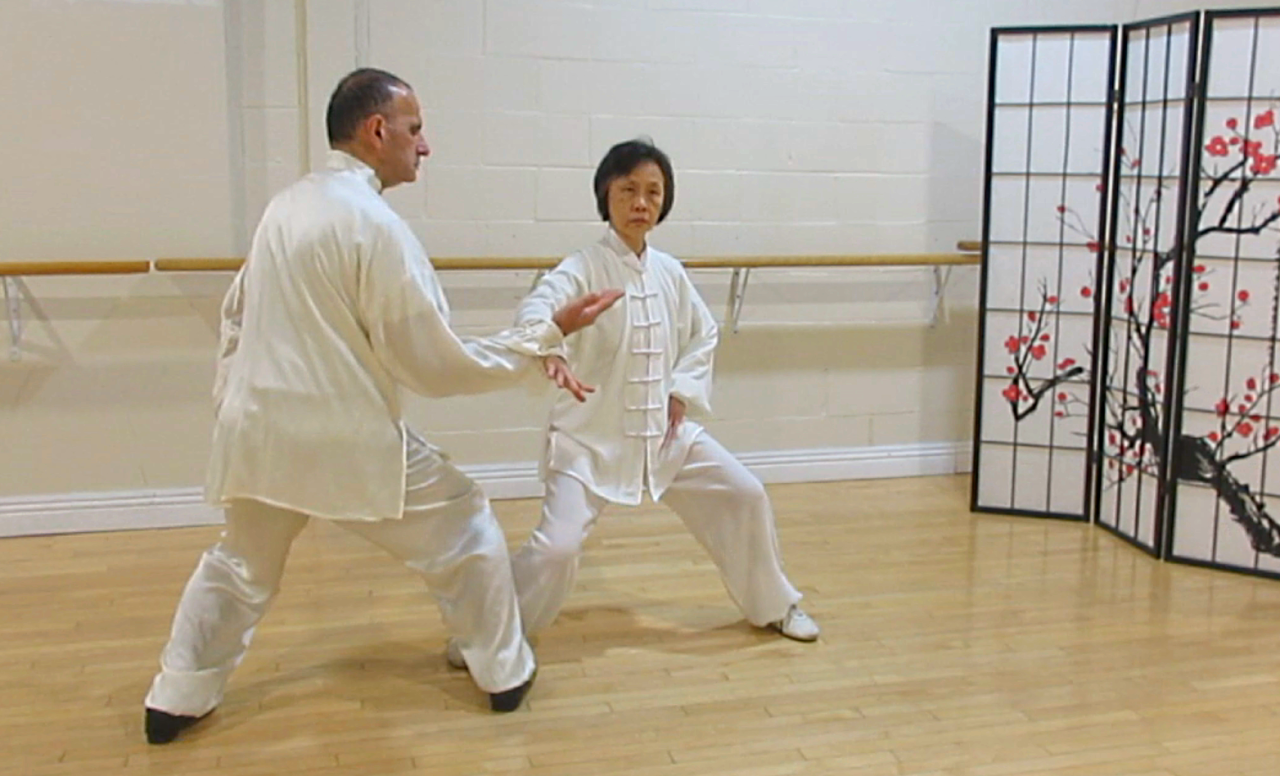Among the three styles of push hands patterns that we practice, Chen style is the most intricate, and physically challenging. Not only are you in contact with your partner with your arms, you are also connecting with your legs. This means that your partner may potentially push you off-balance via the legs if your stance is not strong enough.
 Unlike Yang style and Wu style push hands where the patterns are typically more straight forward, Chen style push hands patterns are spiral-like with more emphasis on turning of the hips. The stances for Chen Style Push Hands are also different, instead of facing your partner in front, you meet your partner sideways, locking your feet together.
Unlike Yang style and Wu style push hands where the patterns are typically more straight forward, Chen style push hands patterns are spiral-like with more emphasis on turning of the hips. The stances for Chen Style Push Hands are also different, instead of facing your partner in front, you meet your partner sideways, locking your feet together.
Chen Style Single Hand Push
The Chen Style single hand push pattern is sometimes called “Figure of Eight”. That is because the path that the hands travel resemble the number 8 when viewed sideways on a vertical plane.
Beginning Stance
- With your partner ready in a horse stance, hook your right foot to your partner’s right foot from the front. Then proceed to position yourself into a horse stance inline with your partner but facing the opposite direction.
- Raise your right arms and connect with the back of your arms just below the wrists.
Basic Movement Pattern
- Turn left, rotate your arm inwards while pushing forward at a downward angle aiming at your partner’s dantian. Your partner will turn right, rotate the arm outwards while pulling the arm back redirecting the attack away from the body.
- Your partner continues the momentum by bringing the hand up to about shoulder height, you follow and remain connected.
- Your partner will now initiate the attack by turning left, rotating the arm inwards while pushing forward at a downward angle aiming at your dantian. You turn right, rotate your arm outwards while pulling back to redirect the attack away from your body.
- Continue the flow by bringing your arm up to about shoulder height, while your partner stays connected.
- You can now repeat the pattern from Step 1.
Switching Sides:
- Step back 180 degrees with your right foot and finish with a horse stance facing the opposite direction.
- Your partner follows by stepping forward 180 degrees, hooking the left foot with your left foot and finishing with a horse stance.
After you and your partner have learned the basic pattern, then you can proceed to enhance your movements by paying attention to areas where mistakes are commonly made.
Enhanced Movement Pattern
- Maintaining your Five Bows: To prevent your five bows from breaking, you have to make sure you are turning your hips enough on both sides. If you do not turn your hips, then your main bow or your arm bow will break.
- Centering: When executing this pattern, your weight is centered at all times, do not shift or lean. A common mistake is to shift or lean to the one side where your arm is connecting with the partner; this may result in a loss of balance.

Applying Basic Principles
The principle of Silk Reeling or Spiral Force is the highlight of this partner exercise. Each movement initiates from the Dantian and travels outwards to the extremities in a continuous spiral cycle, from hips to knees and feet, from shoulders to elbows and hands.
To perform this exercise well, you have to focus on your Dantian sinking down to secure a solid stance, then rotating your hips while keeping your body centered. Keep your arms relaxed while following the rotational path of the pattern, and derive power from your lower body.
Do not go too fast nor take short-cuts in the pattern. Execute the pattern to its fullest range by maximizing the hip turns and the arm extensions. This exercise will strengthen your lower body, increase flexibility of your hips and help you learn and understand the Silk Reeling force well.



